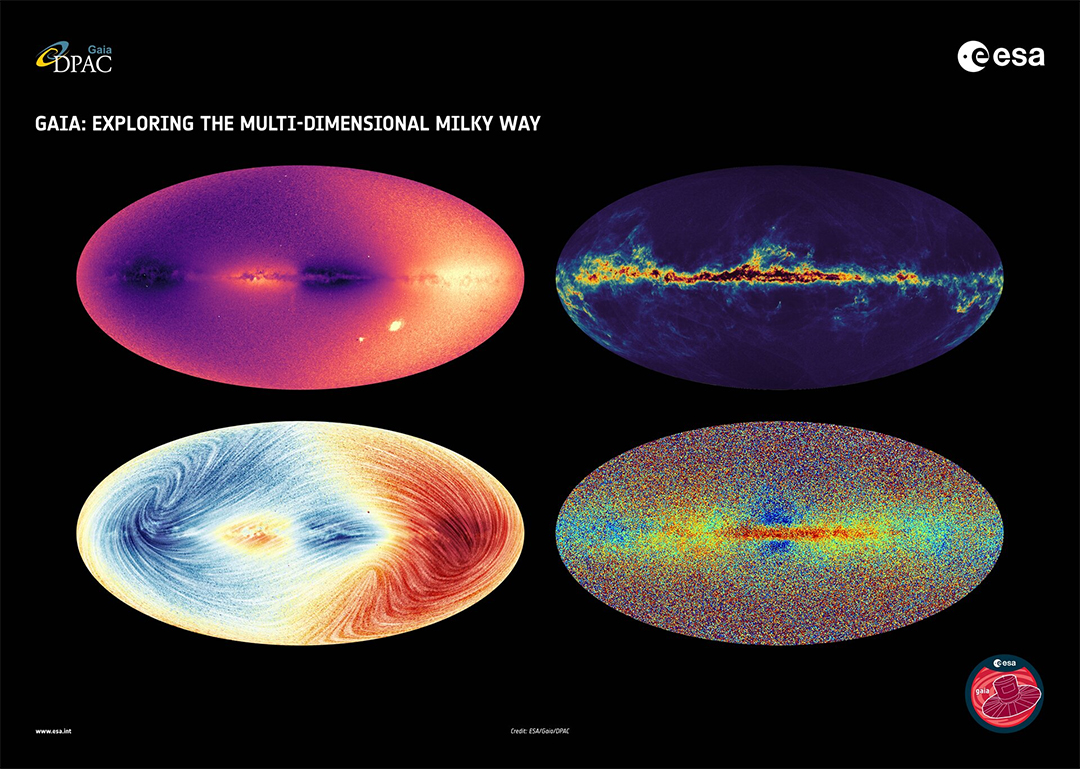ESA’s Gaia mission released new data
On June 13th, ESA’s Gaia mission released its new treasure trove of data about our home galaxy. Astronomers describe strange ‘starquakes’, stellar DNA, asymmetric motions and other fascinating insights in this most detailed Milky Way survey to date.
Gaia is ESA’s mission to create the most accurate and complete multi-dimensional map of the Milky Way. This allows astronomers to reconstruct our home galaxy’s structure and past evolution over billions of years, and to better understand the lifecycle of stars and our place in the Universe.

What’s new in data release 3?
Gaia’s data release 3 contains new and improved details for almost two billion stars in our galaxy. The catalogue includes new information including chemical compositions, stellar temperatures, colours, masses, ages, and the speed at which stars move towards or away from us (radial velocity). Much of this information was revealed by the newly released spectroscopy data, a technique in which the starlight is split into its constituent colours (like a rainbow). The data also includes special subsets of stars, like those that change brightness over time. Read more in the original article: ESA


Leave a Reply